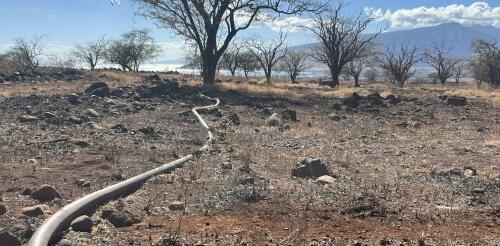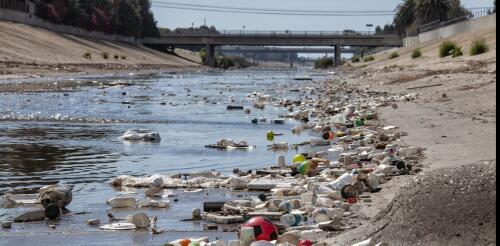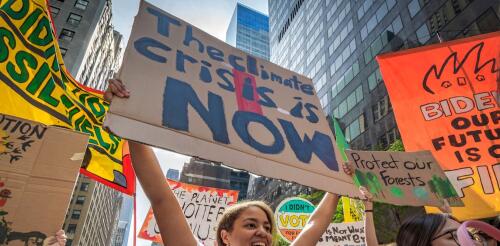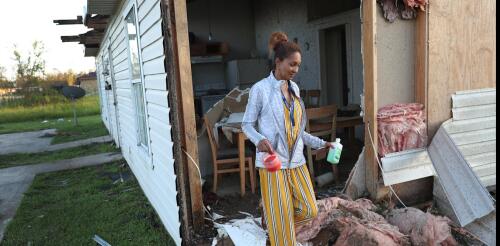environment
Did you know that the bananas you eat today are not the same type as the ones people were eating a few generations ago? The banana you might have had with your breakfast today is a variety called the Cavendish banana, while the one that was in grocery stores up to the 1950s was a variety called Gros Michel, which was wiped out by a disease called Fusarium wilt of banana, or FWB. FWB of Gros Michel was caused by Fusarium oxysporum race 1, a fungal pathogen that affects bananas. This fungal infection kills a plant by occupying its vascular system, blocking water and mineral transportation. You would be hard-pressed to find a Gros Michel banana in American supermarkets today. krares/iStock via Getty Images Plus Plant biologists developed the Fusarium-resistant Cavendish variety to replace the Gros Michel. Yet, over the past few decades, a resurgence of FWB caused by a different strain of the same fungu...
The wildfires that burned across Maui, Hawaii, in August 2023 became the deadliest conflagration in the United States in more than a century. While the harm to homes and tourism drew the most attention, agriculture was also heavily affected across the island, and the harm did not stop once the flames were out. In some cases, fires smoldered underground for weeks. Water systems were destroyed, and some were contaminated in ways scientists are only beginning to understand. Two weeks after the Maui fires began, they were still smoldering below ground. Andrew Whelton/Purdue University, CC BY-ND As an environmental engineer, I work with communities affected by wildfires and other disasters. I also led a team of university and public works professionals to assist in Maui’s response to the fires. In a new study based on that effort, my team worked with the Hawaii Department of Agriculture to assess d...
Plastic waste is piling up at a daunting pace around the world. The World Bank estimates that every person on the planet generates an average of 1.6 pounds (0.74 kilograms) of plastic waste daily. To curb this flow, 175 nations are negotiating a binding international treaty on plastic pollution, with a completion target of late 2024. In July 2024, the Biden administration released the first U.S. plan for addressing this problem. The new U.S. strategy covers five areas: plastic production, product design, waste generation, waste management and plastic capture and removal. It also lists actions that federal agencies and departments are currently pursuing. I study environmental law, including efforts to reduce plastic pollution. As the world’s largest economy, the U.S. is a critical player in this effort. Based on my research, here are three proposals in the U.S. plan that I believe are important and one omission that I view as a major gap. As of...
You probably have been hearing phrases like “climate crisis,” “climate emergency” or “climate justice” more often lately as people try to get across the urgent risks and consequences of climate change. The danger is real, but is using this language actually persuasive? It turns out that Americans are more familiar with – and more concerned about – climate change and global warming than they are about climate crisis, climate emergency or climate justice, according to a recent survey we conducted with a nationally representative sample of 5,137 Americans. Moreover, we found no evidence that the alternative terms increased people’s sense of urgency, willingness to support climate-friendly policies or willingness to act. The familiar terms – climate change and global warming – did at least as well, and sometimes better, than climate crisis and climate emergency in eliciting concern, perceived urgency and willingness...
Most Americans will remember 2020 as the year when the pandemic changed everything. But for Lake Charles, Louisiana, and its neighbors along the Gulf Coast, it was also the year of record-setting disasters, when “once-in-a-lifetime” storms hit in such rapid succession that their impacts blurred together. A recent National Academies consensus study I worked on looked into the compounding disasters that the region faced – both physical and socioeconomic – as storm after storm arrived during the pandemic with little time for recovery. It concludes that Lake Charles’ experiences could be a harbinger of what’s to come in a warming world unless the nation fundamentally rethinks its disaster preparedness, response and recovery strategies. Lake Charles’ compounding disasters Hurricane Laura made landfall near Lake Charles on Aug. 27, 2020, as a powerful Category 4 storm, with wind speeds exceeding those that local building codes were designed...




